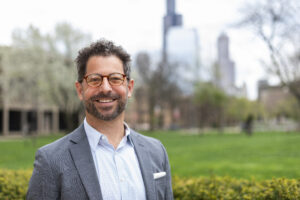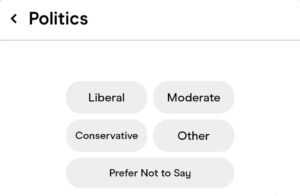Shirley Newsome shakes her head as she watches children run on the grass, playing on a neighbor’s property and the street corner instead of using the new park down the street.
She’s astonished at how some of the children in her North Kenwood-Oakland neighborhood haven’t been to the suburbs, let alone Downtown Chicago.
But Newsome, an African American who’s lived in a tidy two-story house on Lake Park Avenue since 1979, says that after some African Americans have lived in public housing projects for so long, it can be difficult for them to assimilate into diverse mixed-income neighborhoods.
“How did we fall so low on the ladder?” Newsome said.
But after a moment, her explanation became clear.
“Most public housing developments are neighborhoods onto themselves,” said Newsome, president of the North Kenwood-Oakland Community Conservation Council (CCC). “They don’t interact with people outside their development in a lot of instances, so there’s no exposure that’s positive for them to try to duplicate.”
It’s been harder than expected for some former Chicago Housing Authority residents to get settled and flourish in their new neighborhoods, housing officials said.
After living in public housing projects for most of their lives, former residents can find it difficult to accept that they can have a more prosperous life and help is available, housing officials said.
In the southeast neighborhood North-Kenwood Oakland, which is less than 10 miles south of the Loop, 42 public housing units of the 326 proposed units are complete and occupied in Oakwood Shores, where the Ida B. Wells housing projects once stood, developers said.
And, at least one market-rate unit has been sold, while others are being constructed.
Before the Plan for Transformation, there were over 40,000 housing projects in Chicago. After the plan is completed, housing officials say about 20,000 mixed-income units will be completed and 6,500 units will be for public housing residents.
Across the city, there are nine other mixed-income communities in the CHA’s $1 billion Plan for Transformation that are in the planning stages, but there’s been less outreach done in these areas to help prepare housing residents for the new qualifications.
To help with the transition, social services are being provided to public housing residents who need assistance with getting a job or education, as well as healthcare benefits and, if necessary, drug counseling.
“Oakwood Shores is the most successful transformation,” said Roberto Requejo, housing associate for the Metropolitan Planning Council. “The leaders there have a lot of experience with the past and understand this is a new time. They are very involved, well-organized.”
Developers, like The Community Builders (TCB) in Oakwood Shores, are providing social services to public housing residents, a requirement for new and former CHA residents, which developers said hasn’t been easy.
“It’s hard to tell people they need a job when they haven’t been working,” said Bill Goldsmith, Midwest vice president of TCB. “Convincing residents they need assistance is hard because a lot of residents didn’t believe the units would be built (and) didn’t think the (new guidelines) were real.”
TCB partnered with Ujima, a community-based resident group that assists public housing residents with employment, lease compliance, family stability and community integration.
Despite these efforts, Newsome said she’s afraid some public housing residents will regress.
“Under plan for transformation, in a lot of cases, you have residents who are working for the first time — they’re going to lose that first job 99 percent of the time,” she said.
“They got to get acclimated to getting up, getting to work, they have to learn to save so they can have car fare to get to work, and then they got to deal with child care and all those things.
“Those people end up sliding back into public housing as we know public housing. That’s the group that you really need to zero in on and do all that you can to make sure they stay in the working population.”
But the transition for public housing residents in North-Kenwood Oakland is going smoother than expected, said CHA board member and tenant Sandra Young.
Young, who’s the Local Advisory Council president in North-Kenwood, says former CHA residents haven’t had problems meeting the new requirements, and they’re getting jobs. She even holds monthly meetings with North-Kenwood residents to help in the assimilation of public housing residents, as well as address any issues.
Young said before the mixed-income units became occupied, people were distrustful and fearful of their new public housing neighbors.
Newsome also said North-Kenwood residents wouldn’t embrace the idea of having mixed-income housing units if rules were enforced. She said the days of gangs standing on street corners and people destroying property are over because residents like her won’t tolerate it.
“People didn’t want any affordable housing. They felt like the community was inundated, and when the opportunity presented itself, they felt like just get rid of them,” she said.
Mary Pattillo-McCoy, a professor at Northwestern University and North Kenwood-Oakland Community Conservation Council board member, said public housing residents are being taught how be good citizens in order to reside in mixed-income neighborhoods.
Pattillo-McCoy said if more investments would go into low-income neighborhoods, then the problems with public housing would be solved. Instead, low-income families are pushed out of their deprived neighborhoods to move into more affluent, middle-class neighborhoods, where there’s better schools and higher property values, a result of working people.
“Are only neighborhoods with middle-class citizens entitled to working streetlights, respectful and effective policing, attractive parks and affordable preschool?” Pattillo-McCoy said.
But housing officials said demolishing the high-rise projects and redeveloping mixed-income communities will help community building.
“Historically, (public housing residents) were disconnected from the fabric of the city…that was a bad design,” Requejo said. “Now we’re creating neighborhoods from scratch, (so) we have to attract people equally and look at all elements to make a community successful.”
Newsome said building mixed-income units gives “you something other than two different groups of public housing, and that’s what you need. And it should be representative of what a regular community is.
“Children in public housing need to see people going to work. They need to see people who are successful and there’s nothing wrong with them seeing people like them who have money…who are rich,” Newsome said.
Newsome, who’s a licensed paralegal and legal assistant, said she sees both sides of the argument — the need to integrate public housing and the struggle with rising property taxes.
While she lobbied for mixed-income housing, Newsome said she knew her property value could increase.
“I’m committed to the concept, and I’m willing to sacrifice so that we can have a better community for everybody,” she said.
But don’t take her kindness for weakness. Newsome said she doesn’t have tolerance for public housing residents who won’t conform to new rules.
“I’m tired of paying for you. I’ve worked my whole life. You’ve been living on our dime your whole life.
“It’s time to help those who want to be helped.”
Categories:
At Home Public Social Issues South Side
Tags:
housing kenwood oakland






Be First to Comment